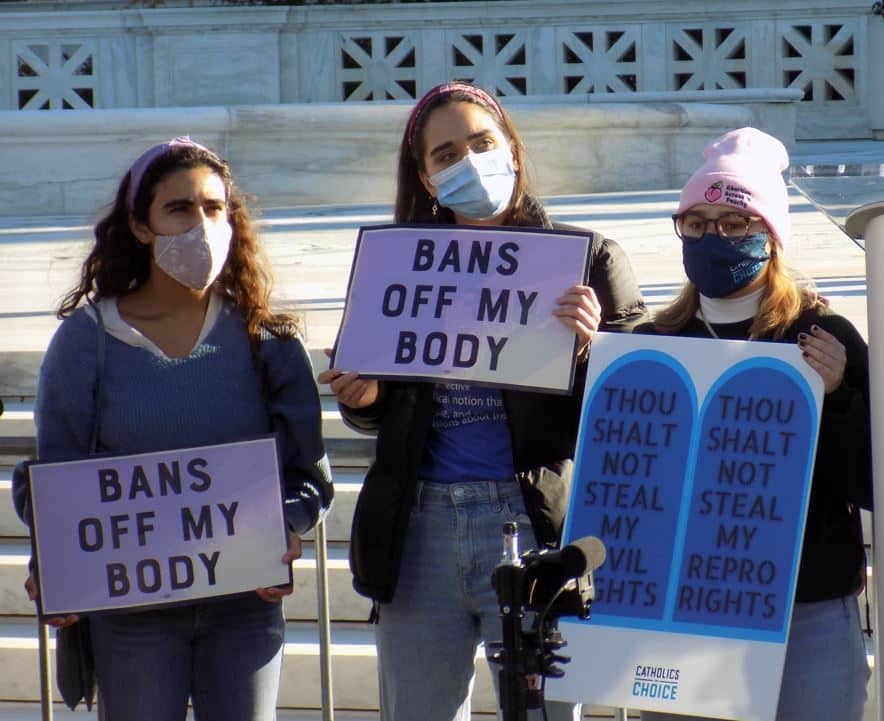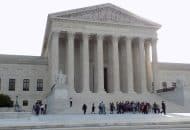Abortions Declined 6% Nationwide in Immediate Aftermath of Dobbs Ruling

WASHINGTON — Legal abortions across the United States declined by more than 10,000, or about 6%, in the two months after the Supreme Court overturned its landmark Roe v. Wade decision, which for five decades had guaranteed a woman’s constitutional right to the procedure.
Meanwhile, states with legal protections for abortion saw a comparably small rise in abortion care. Some states that have abortion protections and that border states with abortion bans — such as North Carolina and Kansas — have seen the biggest increases.
That assessment comes from the Society of Family Planning, an international nonprofit “specializing” in “abortion and contraception science,” according to its website.
Founded in 2005, the society is composed of physicians, nurses, sociologists, public health practitioners and trainees in these fields.
A majority of member physicians include specialists of obstetrics and gynecology, family medicine and adolescent medicine.
The organization began to collect data for #WeCount, a national abortion reporting effort, in April, about six months after the state of Texas’ six-week abortion ban took effect.
Days later, in early May, a still-as-yet unidentified party leaked a draft of the high court’s pending decision in Dobbs v. Jackson Women’s Health Organization, a document that indicated the court was about to overturn Roe.
The ruling, with nothing but very minor changes in syntax, was handed down on June 24.
“Overturning Roe v. Wade created a sudden disruption in abortion care, compounding the crisis in access that people in some states had already experienced before the decision,” said Alison Norris, M.D., Ph.D., #WeCount co-chair and associate professor at The Ohio State University’s College of Public Health.
“We are likewise not seeing a comparable surge in other states to close this gap, which suggests that traveling to get care in a state that allows abortion has not been a realistic option for a significant portion of people denied care,” she said.
“If this trend were to continue for next 12 months, we’d project more than 60,000 people who need abortion care will be unable to obtain it,” Norris added.
The society acknowledges there are some limitations to its data, one being the relative short amount of time covered in its assessment.
It also concedes that while the overall decline suggests many women who needed abortions did not travel from conservative red states to more lenient blue states to get them, “we are unable to estimate the number of abortions that occurred outside the formal health care system, such as via Aid Access or volunteer accompaniment networks in Mexico.”
As a result, it said, it cannot estimate how many women self-managed their abortions versus those that carried their pregnancies to term.
Still, the study is the first try at a nationwide assessment of abortion numbers since Dobbs was handed down.
According to the researchers, 13 states, most of them in the South, banned or severely restricted abortion access just prior to and during the early study period and that based on estimates provided by academics and abortion providers, abortions fell to near zero in those states.
An additional nine states added major abortion restrictions after the Dobbs draft became public, with legal abortions in those states falling by a third.
In states with bans and restrictions, there were about 22,000 fewer abortions in July and August, compared with the baseline of April, before the decision.
In states where abortion remained legal, the number of abortions increased by roughly 12,000, or 11%.
But even with those increases, thousands of abortions appear to have been prevented by the new state laws, the researchers said.
Nationwide Findings
● The estimated number of abortions provided by a clinician decreased from 85,020 abortions in April 2022, before the decision, to 79,620 abortions in August 2022. This change represents a decrease of 6% in the number of abortions nationally, comparing April and August 2022.
● Since the Dobbs decision, the society says there were 5,270 fewer abortions in July and 5,400 fewer in August, for a cumulative total of 10,670 fewer people who had abortions in those months.
● The national abortion rate decreased from 14 per 1,000 women of reproductive age in April to 13 per 1,000 in August.
● Notably, abortions provided by virtual-only clinics increased from 2,830 in April 2022 (3% of total abortions) before the decision to 3,780 in August 2022 (4.7% of all abortions). This change represents an increase of 33% in the number of abortions provided from virtual-only services, comparing April and August 2022 (data not shown).
State Restrictiveness Findings
The impact of Dobbs is of course different based on the policies regarding abortion in the state.
According to the society, the estimated number of abortions provided by a clinician in states that banned or severely restricted abortion (such as a six-week ban) decreased from 8,500 abortions in April before the decision to 460 abortions in August 2022.
According to the study, since the Dobbs decision:
● In states with bans or severe restrictions, there were 7,870 fewer abortions in July and 8,040 fewer in August, for a cumulative total of 15,910 fewer people who had abortions in those states.
● In states with restricted access, there were 2,160 fewer abortions in July and 4,460 fewer in August, for a cumulative total of 6,620 fewer people who had abortions in those states.
● The estimated number of abortions provided by a clinician in states where abortion remained legal with few restrictions increased from 62,600 abortions in April before the decision to 69,740 abortions in August 2022.
● In states with protected access, there were 4,840 more abortions in July and 7,140 more in August, for a cumulative total of 11,980 more people who had abortions in those states.
Notable State-Level Findings
States with the largest percent increases in abortions between April and August included North Carolina (37%), Kansas (36%), Colorado (33%) and Illinois (28%).
By comparison, California experienced a relatively small percent increase between April and August (1%), and already provides the greatest number of abortions of any state in the U.S., between 17,000 and 18,000 abortions per month.
Some states with restrictions in place, but closer in distance to states that banned abortion such as Indiana and Georgia, provided more abortions post-Dobbs, experiencing a surge in the number of abortions provided by a clinician.
On the other hand, states on the East and West coasts, where abortion remains legal with few restrictions, were less likely to experience a surge, as seen by either no or small increases in the percentage of abortions provided by a clinician.
By August, abortion became completely unavailable in several states, including Alabama, Arkansas, Kentucky, Louisiana, Mississippi, North Dakota, Oklahoma, South Dakota, Texas and Wisconsin.
In Texas, which already had a six-week ban on abortion in place, the society said 2,770 abortions were provided in April. A total abortion ban with only a few exceptions went into effect after the Dobbs decision, and by August the monthly estimated number of abortions provided by a clinician declined to approximately 10.
In Oklahoma, the society said 510 abortions were provided in April. The state enacted a total abortion ban in May before the Dobbs decision and the monthly number of abortions in that state declined to less than 10 by June.
Regional Findings
According to the society, the estimated number of abortions provided by clinicians in the Northeast region (Connecticut, Maine, Massachusetts, New Hampshire, Rhode Island, New Jersey, New York, Pennsylvania and Vermont) increased from 18,460 abortions in April before the decision to 19,830 abortions in August 2022.
This change represents an increase of 7% in the number of abortions in the Northeast comparing April and August 2022.
The estimated number of abortions provided by clinicians in the East North Central region, in the eastern part of the Midwest (Illinois, Indiana, Michigan, Ohio and Wisconsin) remained constant from 11,480 abortions in April before the decision to 11,490 abortions in August 2022. This represents a change of 0% in the number of abortions in the eastern Midwest comparing April and August 2022.
The estimated number of abortions provided by clinicians in the West North Central region, in the western part of the Midwest (Iowa, Kansas, Minnesota, Missouri, Nebraska, North Dakota and South Dakota) increased from 2,630 abortions in April before the decision to 2,930 abortions in August 2022. This change represents an increase of 12% in the number of abortions in the western Midwest comparing April and August 2022.
The estimated number of abortions provided by clinicians in the South Atlantic region (Delaware, District of Columbia, Florida, Georgia, Maryland, North Carolina, South Carolina, Virginia and West Virginia) decreased from 19,290 abortions in April before the decision to 18,150 abortions in August 2022. This change represents a decrease of 6% in the number of abortions in the South Atlantic comparing April and August 2022.
The estimated number of abortions provided by clinicians in the South Central region (Alabama, Arkansas, Kentucky, Louisiana, Mississippi, Oklahoma, Tennessee and Texas) decreased from 6,810 abortions in April before the decision to 270 abortions in August 2022. This change represents a decrease of 96% in the number of abortions in the South Central region comparing April and August 2022.
Trend Lines Post Dobbs
Overall, the monthly number of abortions declined from April to August 2022, signaling that many thousands of pregnant people living in states where abortion is banned and restricted were unable to travel for abortion care.
The number of abortions in May were not significantly different from those in April.
In June, after the leaked draft of Justice Samuel Alito’s opinion, the society saw an increase in numbers of abortions across all policy environment categories, an indication, perhaps, of clinics scaling up in anticipation of changes with the Dobbs decision.
In July, the first full month after the Dobbs decision, the society saw severe declines in states with bans, large declines in states with restrictions, and small increases in states with few legal restrictions.
Nearly all regions of the country had declines in July as compared to June. The massive decline in abortion numbers in July in states with abortion bans and in regions of the country where abortion was banned or restricted were even deeper in August.
In April, before Dobbs, the total estimated number of abortions (85,020) was higher than the monthly average reported in previous years, as reported in the Guttmacher Institute’s abortion provider census, which found a monthly average of 77,513 in 2020.
The society said the increase it saw in April was consistent with that upward trend.
“While research finds that summer months usually see [a] decline in abortion rates, our data showed an increase in June and a much larger than expected decrease in July and August,” the society said.
In July and August, the researchers said, a total of 22,370 fewer people obtained an abortion in states with declines in care.
“These people potentially were forced to travel to another state, to delay their abortion, to self-manage their abortion or to continue a pregnancy they did not want,” the society said.
“In states where abortion was already severely restricted before the Dobbs decision, post-Dobbs declines appear to be small changes, because few abortions were already occurring in those states,” it continues. “Nevertheless, the increases in numbers of abortions in states where abortion was legal did not compensate for the reductions seen in states where abortion was banned.”
“These data represent thousands of people and families whose lives are turned upside down because of abortion bans,” said Dr. Ushma Upadhyay, #WeCount co-chair and professor at University of California, San Francisco’s Advancing New Standards in Reproductive Health.
“Traveling to get an abortion is an impossible barrier for many people,” Upadhyay continued. “We know that those denied an abortion are more likely to experience debt, eviction and bankruptcy — which impacts them and their children for years to come. Others will manage their abortions outside the traditional health care system, which carries a potential risk of arrest in many states.”
The full analysis can be found here.
Dan can be reached at [email protected] and @DanMcCue

























